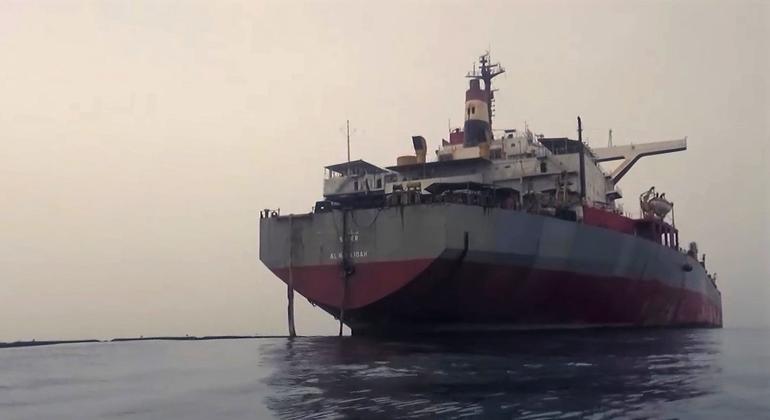The FSO Safer has been moored off the west coast of Yemen for over three decades but has not been properly maintained since war erupted across the country in 2015 between Government forces, backed by a Saudi-led coalition, and Houthi rebels.
The decrepit ship has been described as a “time bomb” because it could leak, break apart or explode, unleashing ecological and humanitarian devastation, with far-reaching impacts.
Challenging and complex
The UN Development Programme (UNDP) is implementing the high-risk project to resolve the threat, as part of a $144 million UN-coordinated operation for the FSO Safer.
UNDP has signed an agreement with international shipping company Euronav to secure a replacement vessel to remove the oil onboard the tanker.
“The purchase of this suitable vessel by UNDP marks the beginning of the operational phase of the UN-coordinated plan to safely remove the oil from the Safer and avoid the risk of an environmental and humanitarian disaster on a massive scale. We must accept that this is a very challenging and complex operation,” said agency chief Achim Steiner.
Sailing soon
The replacement vessel – technically known as a Very Large Crude Carrier (VLCC) – is now in drydock for modifications and regular maintenance before sailing to the FSO Safer, located some nine kilometres off Yemen’s Ras Isa peninsula. It is expected to arrive in early May.
UNDP is contracting marine salvage company SMIT to safely remove the oil and prepare the FSO Safer for towing to a “green” salvage yard.
Averting widespread catastrophe
The UN has long warned of the danger the ageing supertanker poses, as the oil onboard is four times the amount carried by the Exxon Valdez, which caused one of the greatest environmental disasters in United States’ history.
Yemen is already among the world’s leading humanitarian disasters, with more than 20 million people dependent on aid to survive.
A major spill would devastate fishing communities on the Red Sea coast. Whole communities would be exposed to life-threatening toxins and millions of people would be affected by polluted air.
Billions in potential losses
The ports of Hudaydah and Saleef – critical for bringing food, fuel and life-saving supplies into the country – would close, along with desalination plants, cutting off a water source for millions.
The oil could reach the African coast and affect any country on the Red Sea, with disastrous consequences for coral reefs, mangroves, and marine life.
The cost of cleanup alone is estimated at $20 billion. However, billions more could be lost in global trade due to disruptions to shipping through the Bab al-Mandab strait to the Suez Canal, similar to what happened with the grounding of the huge container ship, Ever Given, in 2021.
More funding required
Removing the oil from the FSO Safer is the first part of the UN’s two-track plan, which Yemen’s warring parties have endorsed. The second phase involves installing a mooring system so that the replacement vessel can remain in place.
While the project to remove the oil has drawn significant international support, spiralling costs mainly related to the war in Ukraine triggered a price increase in the market for vessels.
More funding is still needed to complete the emergency phase of the plan, which has a total budget of $129 million. The UN has raised $95 million so far, and $75 million has been received.
“Now we are into the operational phase and hopeful the oil will be removed from the Safer within the next three to four months. But we still urgently need funding to implement the plan and prevent disaster,” said David Gressly, UN Resident and Humanitarian Coordinator for Yemen.
To fill the gap, the UN is re-launching a 2021 crowdfunding appeal which drew support from thousands of people around the world.



